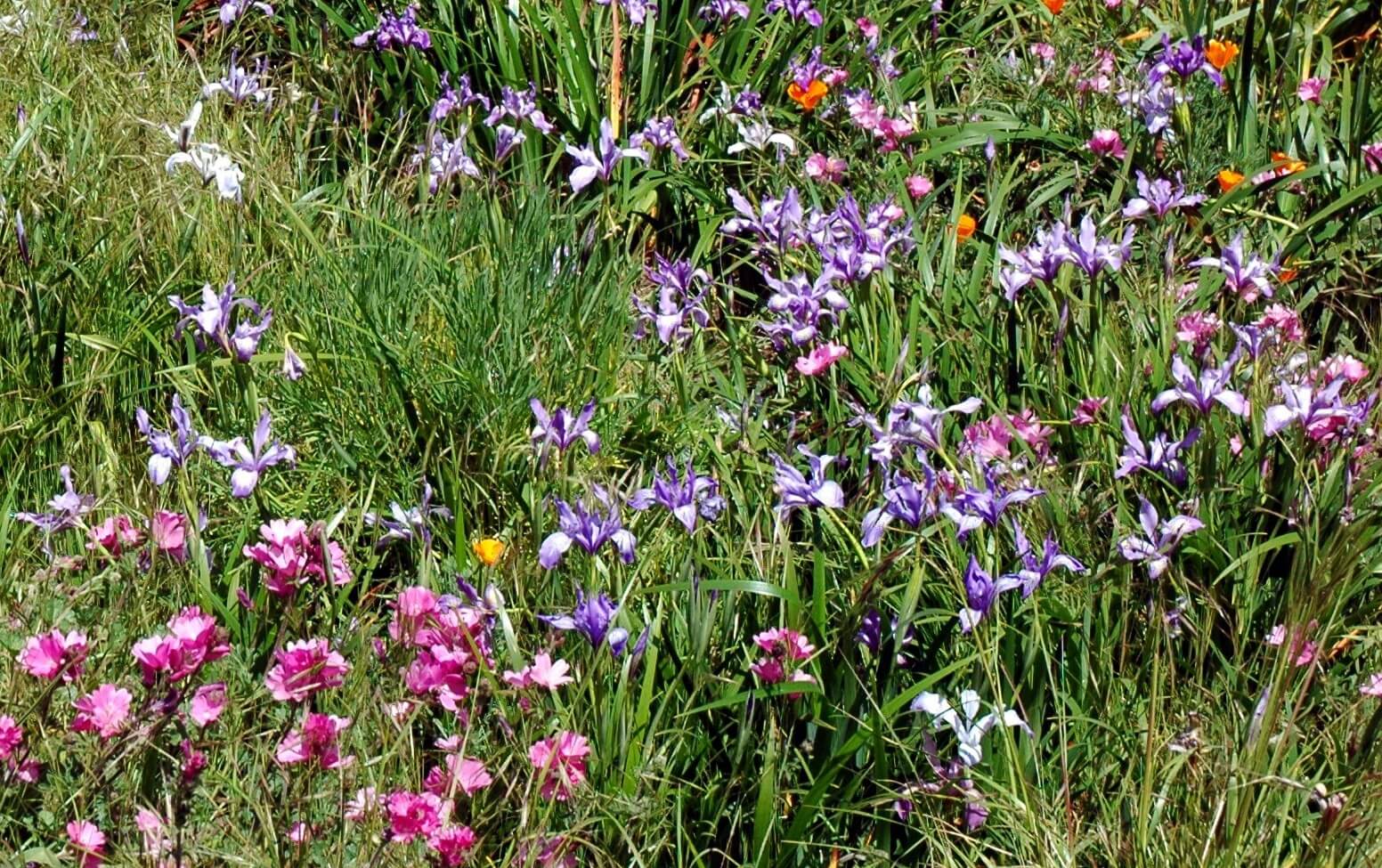Some of my favorite annual wildflowers are the gilias, and the whole genus is pretty much deer-proof. I like globe gilia (Gilia capitata) with its round heads of small blue flowers; these grow wild on Mt. Burdell. I haven’t seen bird’s-eye gilia (Gilia tricolor) in the wild in Marin, but I sure love it in my garden. It does fine in the ground or in containers, and the intricate coloring of the delicate flowers is a true marvel. Even more marvelous is the turquoise pollen!
Wildflowers often seed into my gravel pathways; this seems to be an ideal situation for them. Since I still need to be able to walk the pathways, I let them grow just at the edges, and carefully dig nice specimens from the middle of the path to move or pot up; the rest go to my compost piles. A hori-hori knife is the perfect tool for this; it reaches far down enough, and then with just a little wiggling, loosens up the soil so that the seedlings can be lifted out with the root ball intact. Don’t try to untangle the roots, just plant them as you dig them. To thin out seedlings, use a fine sharp blade and cut the stems of the weaker seedlings at ground level. This lessens the disturbance to the remaining seedlings.
Low, wide containers are fine for growing annual wildflowers. If the containers are strategically placed they can be an aid in spreading wildflowers to other areas of the garden. You could even create a mini-meadow if you have a large enough container!
A combination of the following species will help you get a meadow started:
GRASSES – Idaho fescue (Festuca idahoensis) and purple needlegrass (Stipa or Nasella pulchra).The grass seed will germinate in about 10 days to two weeks and will look like tiny blades of grass right from the start. The blades will grow larger and more profuse, becoming more bunch-like in about two to three months.
PERENNIALS – Yarrow (Achillea millefolium), narrow-leaf mule ears (Wyethia angustifolia), California helianthella (Helianthella californica), and blue-eyed grass (Sisyrinchium bellum). Yarrow germinates in about ten days, and within a month you can see the ferny true leaves forming in a rosette. Narrow-leaf mule ears and California helianthella may take a month or longer to germinate. Look for rosettes of linear leaves close to the ground. Blue-eyed grass germinates more slowly, sometimes taking six to eight weeks before showing as tiny blue-green blades that are flatter than grass blades.
BULBS – Blue dicks (Dichelostemma capitatum), and soap lilies (Chlorogalum pomeridianum) both germinate in about a month or so and, being monocots, will look a bit like two little blades of grass, but wider. Blue dicks may bloom in a year, but the soap lilies need to grow for several years before blooming starts.
ANNUALS – Most annual wildflowers germinate within a week to ten days, and will bloom within a few months. California poppies (Eschscholzia californica) are straplike leaves to start, and then become a divided blue-green true leaf. Globe gilia (Gilia capitata) soon grows a small, green ferny leaf, and white tarweed (Hemizonia congesta ssp. luzulifolia) grows for months as a low rosette of distinctly silvery-green leaves before starting to bloom in late summer.

